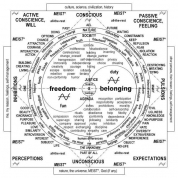 | Please wait... |
Random cards
|
| Ricevere attenzione
stupidità misuratore glicemia iphilo.fr autori combining social change with personal change Filosofie Change oneself games verità Quanto vorrei avere uno scambio di coccole con X? Epicureismo (Wikipedia) apparire in un certo modo  Henri Cartier Bresson 31 Rache ist süß - Wenn dein Chef dich feuert | Ladyland Guardian.co.uk evil Titoli accademici
la corruzione degli amministratori pubblici amazon.de Soziale Interaktionen aktivieren das Belohnungssystem im Gehirn Sem a qual a vida é nada Senza il quale la vita non è niente iig Deep Learning Systems Social Thinking: Learning the Rules of the Game (video) jealousy Aleardo Grosso Quanto gli altri mi sono simpatici o antipatici? tolleranti primo Capacità "Seven deadly sins" by Kurt Weill, Opera de Paris, cond. A.Polianichko  Andreas Gursky 8 Forze involontarie Sentirsi moralmente giusti Roma: S. Lorenzo in Miranda - 1993 war Ambizioni buoni socievoli news.google.it  Choir .jpg) Museo di Roma (Palazzo Braschi)  Steve Pinker chirurgie esthetique tunisie tout compris Le tourisme médical en Tunisie ne cesse d'augmenter grâce à la compétence des chirurgiens plasticiens et des cliniques Pour plus de témoignages : dr walid balti avis et dr walid balti avis semantic Language tools per imparare le lingue Cosa è importante sapere Software mentale  Oliviero Toscani Photographs 47 repulsione La maschera Vent'anni fa m'ammascherai pur'io! E ancora tengo er grugno de cartone che servì p'annisconne quello mio. Sta da vent'anni sopra un credenzone quela Maschera buffa, ch'è restata Una vorta je chiesi: - E come fai a conservà lo stesso bon umore La Maschera rispose: - E tu che piagni che ce guadagni? Gennte! Ce guadagni Fa' invece come me, ch'ho sempre riso: e se te pija la malinconia D'allora in poi nascónno li dolori de dietro a un'allegia de cartapista  Rational Mandala What do I say about others? Donare Essere mutilato Perto vicino L'economia  Richard Dawkins 1 Qual è il bilancio tra il mio servire e il mio usare gli altri? Criticare Cambrige University Press boscolo senza ragusa € 870 No Ragusa, Profondità Valutazioni Ricordi i geni altrui Compo duaxo PPO Blogging individuale e di laboratorio sociale meccanismo Rituals of belonging repression Essere curato dna che paure ha? Dare consigli a persone ilyashambat thought essere approvato Una persona handicappata persone Quanto X è libero? For what do others and I cooperate? cose che non posso tollerare Meeting The Giants of Philosophy David Hume Audiobook mega.co.nz a chi hai fatto del bene? unstinting generoso, abbondante, ampio, grande, largo, prodigo, liberale Gestalt  Mosaici di umanità 209 Cosa penso degli altri? stabilità, continuità, conservazione della comunità Intelligenza i miei cambiamenti sono approvati dagli altri the thing-in-itself Mandala (wikipedia) Ma??ala (?????) is a Sanskrit word meaning "circle." In the Buddhist and Hindu religious traditions their sacred art often takes a mandala form. The basic form of most Hindu and Buddhist mandalas is a square with four gates containing a circle with a center point. Each gate is in the shape of a T. These mandalas, concentric diagrams, have spiritual and ritual significance in both Buddhism and Hinduism. The term is of Hindu origin and appears in the Rig Veda as the name of the sections of the work, but is also used in other Indian religions, particularly Buddhism. In the Tibetan branch of Vajrayana Buddhism, mandalas have been developed into sandpainting. They are also a key part of anuttarayoga tantra meditation practices. In various spiritual traditions, mandalas may be employed for focusing attention of aspirants and adepts, as a spiritual teaching tool, for establishing a sacred space, and as an aid to meditation and trance induction. According to the psychologist David Fontana, its symbolic nature can help one "to access progressively deeper levels of the unconscious, ultimately assisting the meditator to experience a mystical sense of oneness with the ultimate unity from which the cosmos in all its manifold forms arises." The psychoanalyst Carl Jung saw the mandala as "a representation of the unconscious self,"[citation needed] and believed his paintings of mandalas enabled him to identify emotional disorders and work towards wholeness in personality. In common use, mandala has become a generic term for any plan, chart or geometric pattern that represents the cosmos metaphysically or symbolically, a microcosm of the Universe from the human perspective.[citation needed] Condividere con me le loro cose The Swingle Singers all Béla Bartòk (1881-1945): Il castello di Barbablù  Tallinn, Estonia 11 |